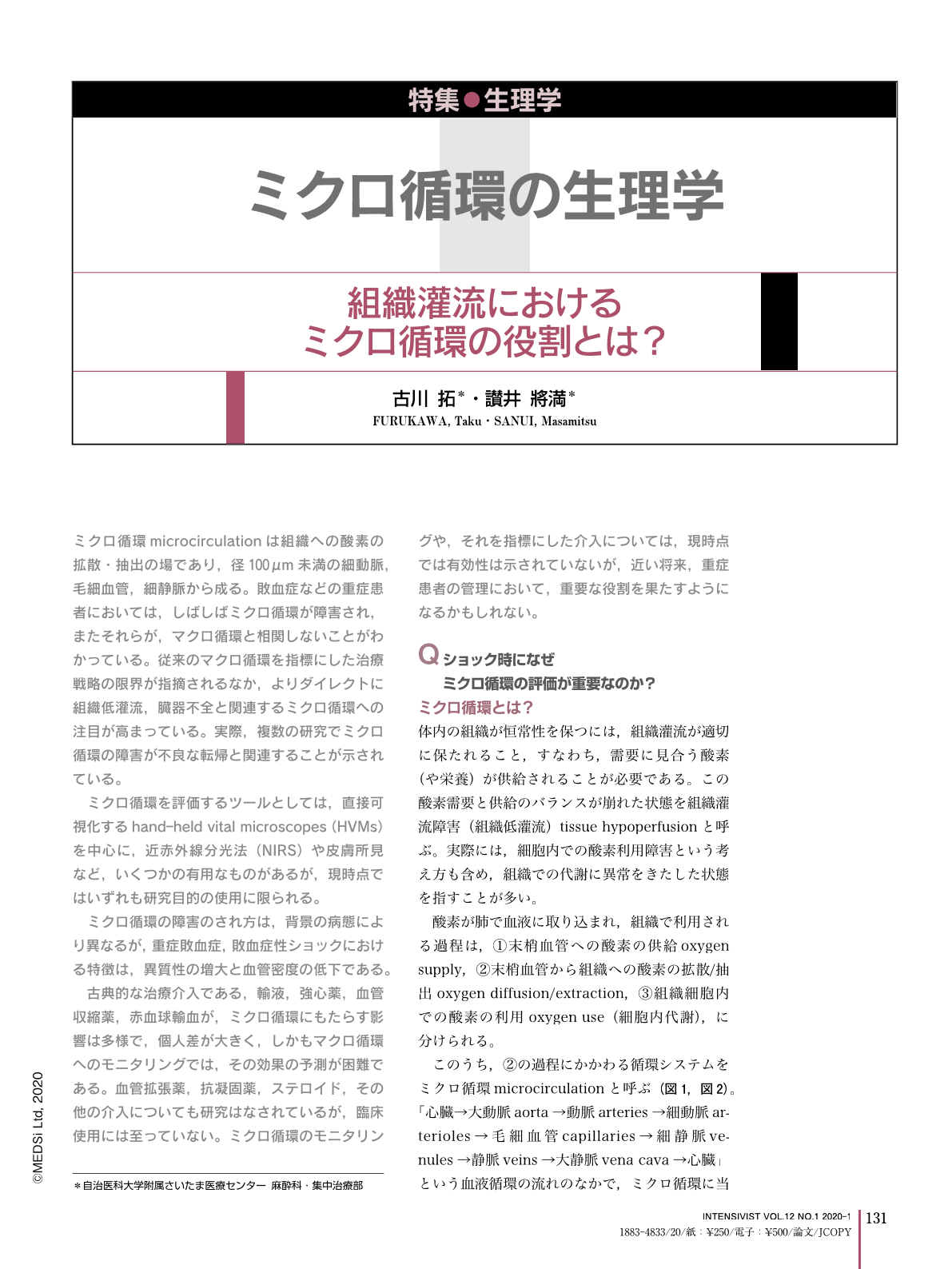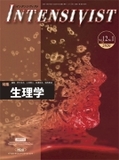Japanese
English
- 有料閲覧
- Abstract 文献概要
- 1ページ目 Look Inside
- 参考文献 Reference
- サイト内被引用 Cited by
ミクロ循環microcirculationは組織への酸素の拡散・抽出の場であり,径100μm未満の細動脈,毛細血管,細静脈から成る。敗血症などの重症患者においては,しばしばミクロ循環が障害され,またそれらが,マクロ循環と相関しないことがわかっている。従来のマクロ循環を指標にした治療戦略の限界が指摘されるなか,よりダイレクトに組織低灌流,臓器不全と関連するミクロ循環への注目が高まっている。実際,複数の研究でミクロ循環の障害が不良な転帰と関連することが示されている。
ミクロ循環を評価するツールとしては,直接可視化するhand-held vital microscopes(HVMs)を中心に,近赤外線分光法(NIRS)や皮膚所見など,いくつかの有用なものがあるが,現時点ではいずれも研究目的の使用に限られる。
ミクロ循環の障害のされ方は,背景の病態により異なるが,重症敗血症,敗血症性ショックにおける特徴は,異質性の増大と血管密度の低下である。
古典的な治療介入である,輸液,強心薬,血管収縮薬,赤血球輸血が,ミクロ循環にもたらす影響は多様で,個人差が大きく,しかもマクロ循環へのモニタリングでは,その効果の予測が困難である。血管拡張薬,抗凝固薬,ステロイド,その他の介入についても研究はなされているが,臨床使用には至っていない。ミクロ循環のモニタリングや,それを指標にした介入については,現時点では有効性は示されていないが,近い将来,重症患者の管理において,重要な役割を果たすようになるかもしれない。
Oxygen diffusion and extraction to peripheral tissues takes place in the microcirculation, consisting of arterioles, venules, and capillaries <100μm in diameter. In critically illnesses including sepsis, disturbance of the microcirculation has been shown to be common and often dissociated from global hemodynamics. Microcirculatory alterations can be associated more directly with tissue hypoperfusion, organ dysfunction, and consequently worse outcomes. Several methods, including handheld microscopes (HVMs), near infrared spectroscopy (NIRS) and skin perfusion, are available to evaluate the microcirculation at the bedside. At the present time, however, these methods are mostly used for research purposes only. Microcirculatory alterations vary depending on the associated pathophysiology. In severe sepsis or septic shock, these alterations are characterized by a decrease in capillary density with increased heterogeneous perfusion. Classic hemodynamic interventions such as fluids, inotropes, vasopressors and red blood cell transfusions, have variable effects on the microcirculation with individual variations. These effects cannot be predicted by global hemodynamics. Vasodilators, anticoagulants, steroids and other interventions have also been investigated, but have not been used clinically. Monitoring and interventions focused on the microcirculation have not yet been shown to impact clinical outcomes, but they may play key roles in the near future.

Copyright © 2020, MEDICAL SCIENCES INTERNATIONAL, LTD. All rights reserved.


